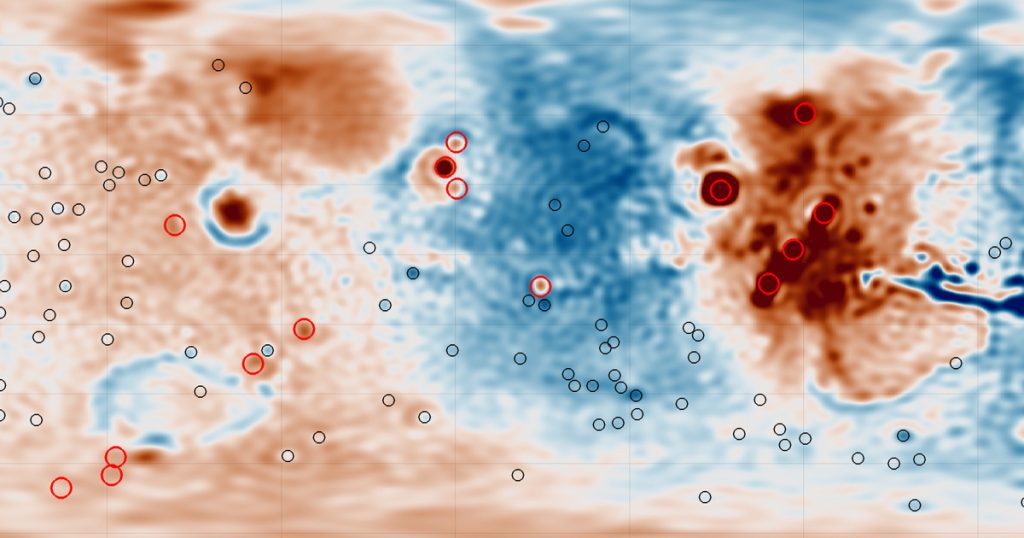“There seems to be no trace of them at the surface.”
Bury Blast
A new analysis of Mars’ gravitational field has revealed hidden structures buried beneath the remains of an ancient ocean. The work, which was presented this week at the Europlanetary Science Congress in Berlin, could add to a growing body of evidence that suggests the Red Planet may not be as geologically “dead,” or inactive, as once believed.
Overlaid with a thick and smooth layer of sediment which may have once been a seabed, the structures are significantly denser than their surroundings — though a more precise explanation of what they might be has so far eluded researchers.
Scar and Away
These aren’t the first oddities detected in Mars’s interior. Last year, scientists revealed that China’s Martian rover, Zhurong, found evidence of underground structures shaped by water ice deposits.
Explaining these latest anomalies, however, is trickier. According to lead author Bart Root, an assistant professor at TU Delft in Denmark, the structures — which are about 300 to 400 kilograms per cubic meter denser than their surroundings — could have been formed by some kind of volcanic activity, or they could have been compacted by ancient impact events, like meteor strikes, of which Mars has a long history.
“There are around twenty features of varying sizes that we have identified dotted around the area surrounding the north polar cap — one of which resembles the shape of a dog,” Root said in a statement about the work.
“There seems to be no trace of them at the surface,” he added. “However, through gravity data, we have a tantalizing glimpse into the older history of the northern hemisphere of Mars.”
Thar Side
The discovery was made by using satellite orbits to form a picture of Mars’ gravitational field, paired with on-the-ground seismic data collected by NASA’s InSIGHT lander.
In addition to the dense structures, this revealed another subterranean secret: the Martian mantle appears to still play host to active processes which may be feeding into Olympus Mons, the largest known volcano in the Solar System.
The evidence for this, according to the work, was the detection of another gravitational anomaly below a volcanic plateau called Tharsis Rise — where Olympus Mons resides — which indicates that this incredibly dense region is undergirded by a much lighter mass nearly 700 miles underground.
Root suggests that this could be an enormous plume of magma around 1,000 miles across in the Martian mantle, which may be in the process of slowly bubbling towards the surface.
“This means we need to rethink how we understand the support for the Olympus Mons volcano and its surroundings,” Root said in the statement. “It shows that Mars might still have active movements happening inside it, affecting and possibly making new volcanic features on the surface.”
More on Mars: Scientists Discover Massive Reservoir of Water Hiding on Mars

